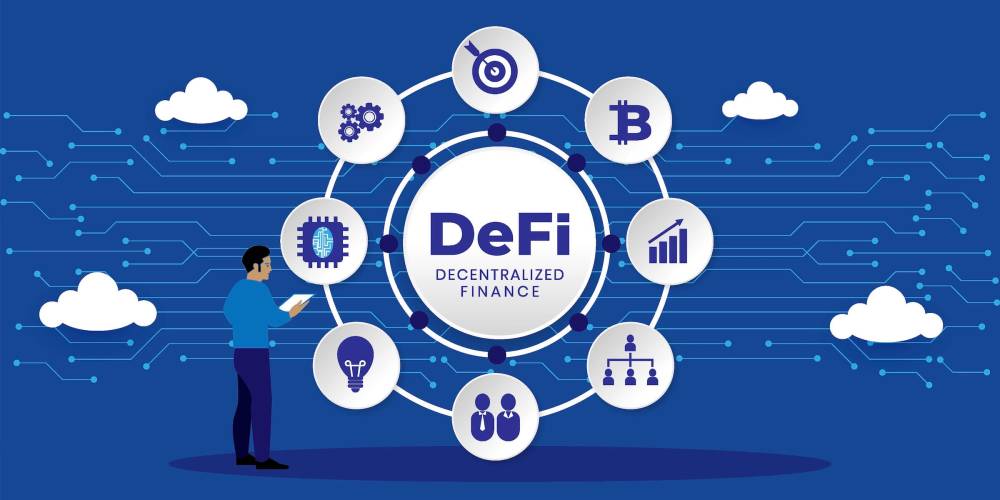The decentralized finance industry has enjoyed massive growth in recent years. According to DeFi Pulse, the total value of assets locked in DeFi has increased by more than four times since mid-2020. However, this growth has also attracted a lot of risks that are likely to affect most DeFi investors.
In fact, according to AtlasVPN, an internet security firm, 76% of all major global hacks are affiliated with the DeFi industry. This goes to show how risky investing in DeFi can be.
In this guide, we will explore some major risks related to DeFi and how you can avoid or mitigate them.
The Top DeFi Risks
There are many risks you will encounter as a DeFi investor. However, the most damaging vulnerabilities of Decentralized finance are associated with the following:
- Smart contracts
- Software
- Governance
- Market
- Counterparty risks
Smart Contract Risks
Smart contracts are at the epicenter of any DeFi ecosystem. These are digital contracts that are coded into a DeFi protocol and self-executed when certain conditions are met. While they can reduce or entirely mitigate counterparty risks, smart contracts might still pose major technology vulnerabilities.
One of the main functions of a smart contract is to prevent users from claiming compensation fraudulently. This means that if you erroneously transfer funds to the wrong address, you might entirely lose them since the transaction is irrevocable.
Software Risks
There might also be errors in the main software of the DeFi protocol that might cause them to falter. Specifically, there are two main risks that are consistent across all kinds of software. These are:
- Coding errors may introduce bugs that will cause the software to malfunction. Users may then exploit this malfunction and steal assets from the protocol. For instance, a bug may allow a loan borrower to reclaim their collateral without actually repaying the loan.
- Security vulnerabilities - This may provide loopholes that can be exploited by hackers who can steal billions in investors’ funds. DeFi protocols such as Thorchain, Yearn Finance and Pickle Finance have lost billions due to security vulnerabilities.
Although some DeFi protocols might repay you in case of a hack, the possibility that you will lose your investment forever is possible. To avoid this, only invest an amount that you can afford to lose. You might also want to consider investing in established DeFi protocols that have been in the market long enough and have robust security to cushion investors against hacks.
Governance Risks
In most cases, changes in a DeFi protocol are a result of governance proposals. Some of these proposals may alter the liquidity composition of a protocol and keep investors on the platform.
Architecturally, DeFi governance models are supposed to be decentralized.
However, most DeFi protocols now have governance structures that are more centralized than decentralized. The result is that a small group of whale investors often influence the outcome of protocol proposals.
While this shift toward centralized governance might be the result of a model that allows people with more assets to have more power, it exposes the protocol to a governance risk. The few people that influence proposals might use them to benefit themselves and create losses for other investors.
There is, therefore, a need for more efficient decentralized governance models that cannot be taken advantage of by a few individuals.
Market Risks
Admittedly, most DeFi risks are tied to the protocol itself. However, crypto risk managers so often obsess about the software so much that they miss one glaring risk channel in the DeFi industry; the market.
DeFi market risks are often caused by the famous crypto volatilities. For instance, when the price of an asset certainly tanks, it could severely affect the liquidity pool as investors pull out. This might result in serious levels of slippage.
Generally, price volatility is the biggest market risk you will encounter with DeFi. However, there are also other factors like scams and misinformation which might cause you to lose your investment.
The best way to mitigate against market risks is to be alert and keep tabs on the market trends. You will want to know when is the right time to buy and when to sell.
You should also do enough research and ensure that you are investing in a stable DeFi protocol. If you are not sure, you can talk to a crypto investment advisor who can give you the way forward.
Counterparty Risk
Counterparty risk is a type of risk that may arise when one party in a financial transaction fails to fulfil their commitments. This kind of risk is common with DeFi lending protocols like Compound, Aave and Maker.
In this case, users may borrow money from the protocol and fail to repay. The situation gets especially dire when a vulnerability exists where borrowers can take back their collateral without repaying their loan.
To avoid or reduce counterparty risks, DeFi lending protocols usually ask for huge collateral for loans. For instance, you might be required to deposit collateral worth more than 100% of the amount you are borrowing.
In this case, the protocol will not suffer a loss even if you don’t repay the loan.
Conclusion
While it can be very tempting to jump in and invest a huge amount of money in a promising DeFi protocol, you need to be aware of the risks we have mentioned in this guide. Like any investment opportunity, you will need to do your due diligence, talk to investment advisors and never invest more than you can afford to lose.







